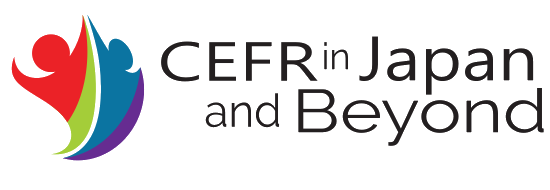Volume1
CEFR Journal - Research and Practice
Volume 1 (May 2019)
https://doi.org/10.37546/JALTSIG.CEFR1
These articles are open access and licensed under an Attribution-NonCommercial-NoDerivatives 4.0 International (CC BY-NC-ND 4.0) license.
Download PDF of complete issue:
Click here for downloading complete issue of volume 1 with DOI
Table of Contents
Volume 1-1, page 5 -17: Coming Full Circle—From CEFR to CEFR-J and back, Yukio Tono (Tokyo University of Foreign Studies)
Volume 1-2, page 18-32: Impact of the Common European Framework of Reference—A bibliometric analysis of research from 1990-2017, Judith Runnels (University of Bedfordshire) & Vivien Runnels (University of Ottawa)
Volume 1-3, page 33-40: How new CEFR mediation descriptors can help to assess the discussion skills of management students—Global and analytical scales, Irina Y. Pavlovskaya (St. Petersburg State University) & Olga Y. Lankina (St. Petersburg State University)
Volume 1-4, page 41-57: Implementing the CEFR at a Vietnamese university—General English language teachers’ perceptions, Le Thi Thanh Hai (University of Foreign Languages, Hue University) & Pham Thi Hong Nhung (University of Foreign Languages, Hue University)
Volume 1-5, page 58-65: Jumping through hoops and keeping the human-in-the-loop—Interview with Dr Nick Saville
Editorial - Volume 1, Morten Hunke
This is the maiden issue of our new CEFR Journal – Research and Practice. It has taken us a little longer to publish than we had expected and hoped for, but we are glad to be able to finally introduce our brand new online journal to the public. We envisage this journal as an accessible platform for different kinds of learning, teaching and research activities in the field of the CEFR, language frameworks, and portfolios. Reports on best practice and work in progress are equally as welcome as article/book reviews and academic articles. It goes without saying that the journal stands firmly on the grounds of due diligence and quality assurance. All submissions undergo double-blind peer reviews by at least two reviewers.
In this first issue, we are proud to present to you an illustrious collection of texts from around the globe. We kick off by exploring some of the after-effects of the extensive CEFR-J project in Japan. In this progress report, the reader is presented with glimpses of how such a huge project outside Europe now contributes to language learning and teaching resources globally as can be seen in the CEFR-Jx28 project in Coming full circle: From CEFR to CEFR-J and back (Yukio Tono, Tokyo University of Foreign Studies, Japan).
This opening article is followed by some meticulous bibliometric research on the width and breadth of scholarly work relating to the CEFR by Judith Runnels (University of Bedfordshire, UK) and Vivien Runnels (University of Ottawa, Canada) in Impact of the Common European Framework of Reference: A bibliometric analysis of research from 1990-2017.
Next up, Irina Pavlovskaya and Olga Lankina from the University of St. Petersburg (Russia) showcase early use of the newly added feature of mediation in the publication of the CEFR Companion Volume (CEFR/CV): How new CEFR mediation descriptors can help to assess the discussion skills of management students – global and analytical scales.
Vietnam makes for another astounding example of adoption and adaptation of the CEFR in an Asian country in order to achieve massive nationwide changes to the entirety of (English) language teaching from school to higher education level. How such drastic alterations affect teachers having to conform to the new system is described in an article by Pham Thi Hong Nhung and Le Thi Thanh Hai (Hue University of Foreign Languages, Vietnam): Implementing the CEFR at a Vietnamese university: General English language teachers’ perceptions.
In Jumping through hoops and keeping the human-in-the-loop, Maria Gabriela Schmidt and I myself had the opportunity to interview Dr. Nick Saville (Director of Research and Thought Leadership at Cambridge Assessment English, UK) at the JALT International Conference in Tsukuba in November 2017. This interview looks at both the history of the CEFR in Japan as well as issues surrounding language testing and the role of artificial intelligence in the sphere. It also offers some insights into the background history of the JALT CEFR & LP SIG and it helps to contextualize how this journal came into existence.
Thus, is the maiden issue of the CEFR Journal rounded off. It has been an honor to serve as the Editor-in-Chief for this first issue. I would like to express my deepest gratitude to everyone who made this journal possible: the authors, the reviewers, the proofreaders, the editorial advisory board, and especially the JALT CEFR & LP SIG officers and members. We have been working together closely for more than 10 years and have realized a fair number of CEFR-related projects. May this journal gradually become the platform of mutual support and stimulus to foreign language professionals around the world that we are envisioning it to be.
—Bochum (Germany) & Tokyo (Japan), May 2019
* * * * * *

